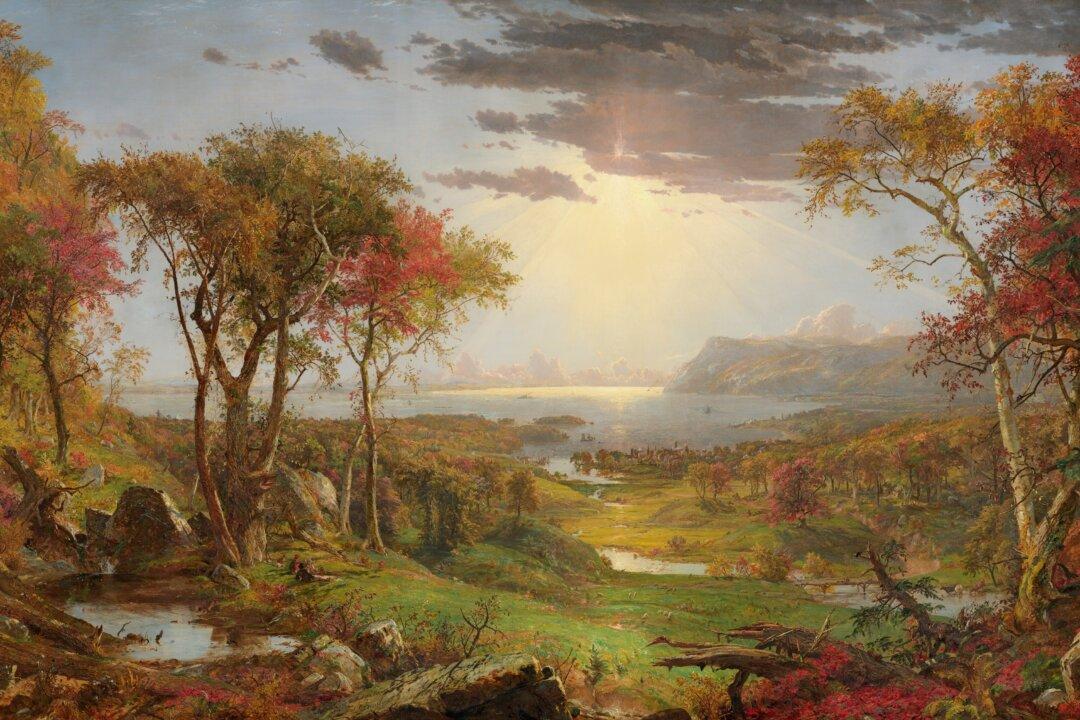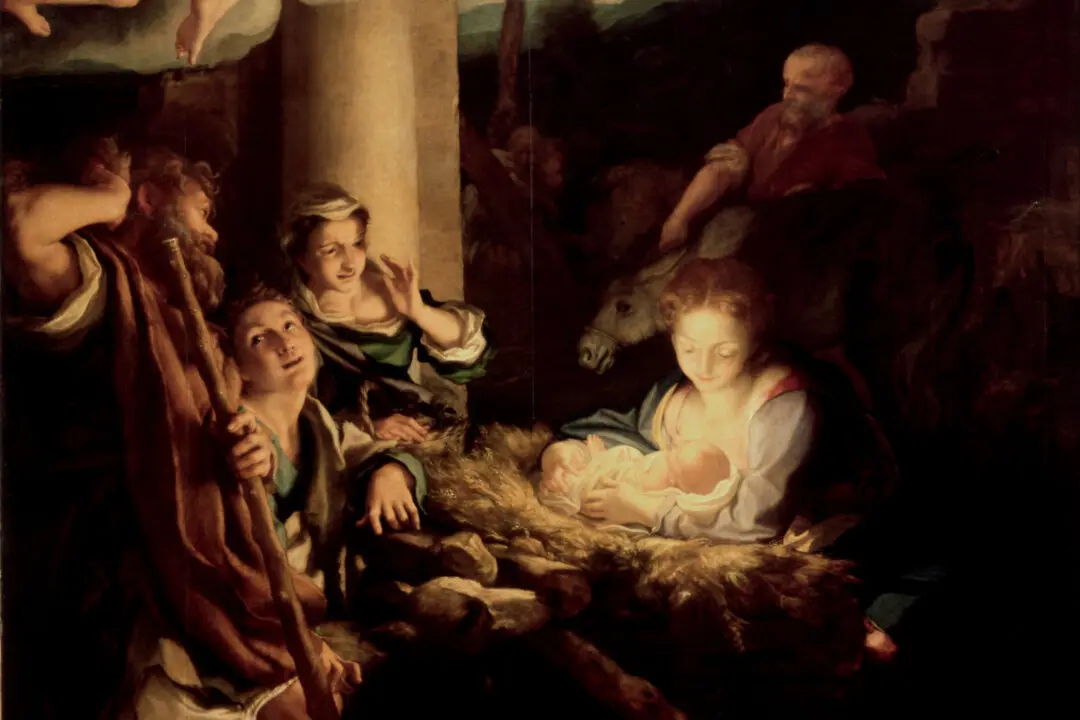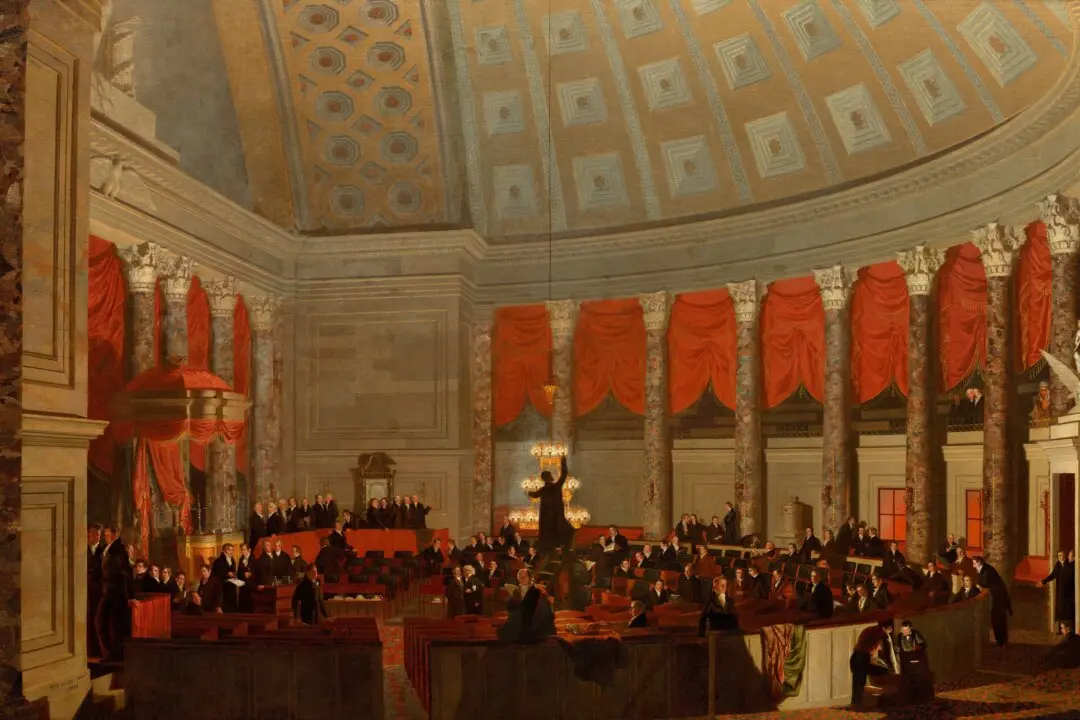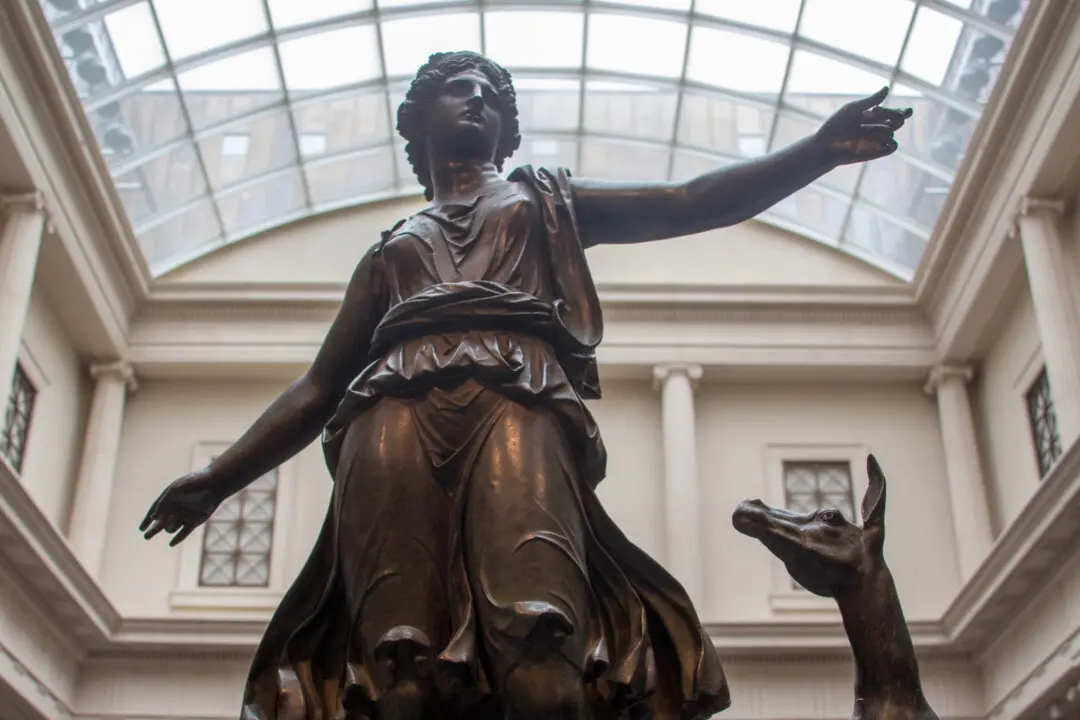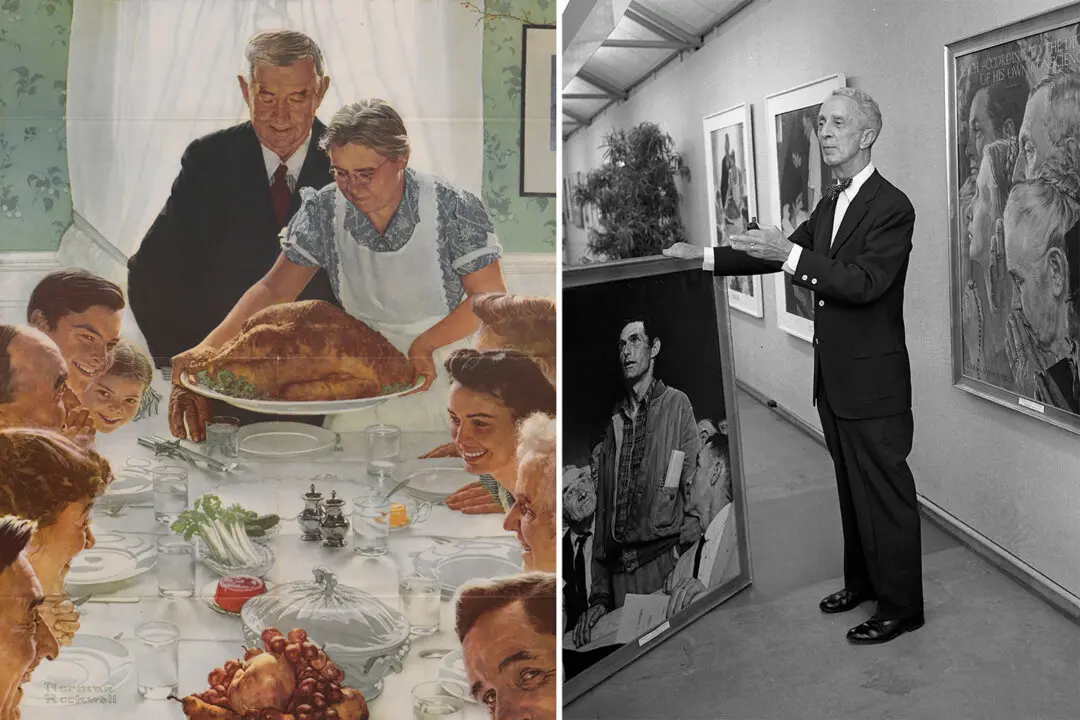The most American of seasons is autumn. The country is famous, particularly in the Northeast, for its spectacular foliage. Leaves turn hues worthy of an artist’s paintbox: bronze, crimson, golden, purplish, russet, tan, and scarlet. It was natural, therefore, that fall was a favorite subject of the Hudson River School, a 19th-century American art movement that specialized in landscapes.
Jasper Francis Cropsey (1823–1900) is known by the sobriquet “America’s painter of autumn.” He explored the theme of autumnal nature throughout his artistic career. Although not as well-known as his colleagues Thomas Cole and Frederic Edwin Church, his majestic landscapes were popular for much of his lifetime in the United States and England. Cropsey’s most ambitious painting is the poetic “Autumn – On the Hudson River,” now part of the collection of the National Gallery of Art.

